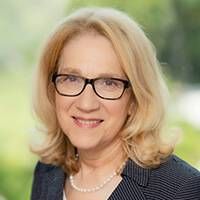Building Cityscapes for Healthy Aging
How to create a future in which people can age successfully
This article is the 10th in a weekly Next Avenue series, The Future of Aging: Realizing the Potential of Longevity published by the Milken Institute Center for the Future of Aging. Links to the rest of the series appear at the end of this article.)
Extraordinary public health advances such as clean water, immunizations and new medical treatments have doubled the average American’s life expectancy over the past 150 years. These extra years of life bring rewards, along with some challenges. For example, many people today live in communities that are increasingly difficult to physically navigate as the years go by.

In the United States, the population of older adults, including the oldest of the old, is growing rapidly. According to the White House Conference on Aging, over the next 50 years, the number of people aged 65 and older is expected to more than double to 92 million and those 85 and older will likely triple to 18 million.
What's Making It Hard to Age in Place
AARP research strongly suggests that this generation expects to be active and independent as long as possible. Up to 90 percent want to age in their own communities and at home. Yet, neighborhoods built around the automobile do not make it easy for them to stay active.
Older people may not be able to cross the street because the lights are timed to a younger person’s faster gait. They may not be able to walk to the grocery store to buy fresh food or to a town center where they can go to the library, find a job or sign up for a class.
Still others live in places that lack access to public transportation, affordable housing, health care, green space or opportunities to volunteer. High-rise apartment buildings and gated communities designed to be convenient and safe may inadvertently contribute to such isolation.
With the graying of America, we need transformative changes in the built environment, changes that will make our neighborhoods, cities and counties healthier places to grow old.
To that end, the Milken Institute has produced a series of reports on the best U.S. cities for successful aging. Although we often think of a warm climate as the most important environmental asset for older people, this research shows that other factors — those that help older residents stay engaged, active and productive — are much more essential.
AARP's Most Livable Cities Tool
AARP has created an online tool that can identify the best cities for older people. The tool not only celebrates the best in U.S. cities, but also helps residents, county and state officials, business and health-care leaders and others find, and then address, important gaps — such as the lack of walking paths or parks.
That online tool and other Internet resources can promote healthy aging, according to recent research. Computer-savvy older adults can find the latest updates on a health condition, visit a doctor or nurse in cyberspace — or even summon a quick ride from a ride-sharing service or van.
3 Ways to Build on the Momentum
We have taken great steps toward a healthier future, but we need to build on that momentum.
First, officials from all sectors, including transportation, health, housing, education and others, must start working with urban planners and property developers to imagine and then create a future in which people are not just growing older, but getting better.
Second, policymakers must create incentives for developers and others to invest in buildings, landscapes and urban plans that make it easier to adopt health habits that support successful aging, such as active lifestyles, eating plenty of fresh, healthy food and jobs or volunteer positions that engage the mind.
Third, we all must look at our own town or neighborhood, identify the gaps and advocate for better conditions so we can stride into the future with good health on our side.
Working together, and with the help of smart and supportive organizations such as AARP, we can build better neighborhoods — healthier places to live for all generations.
We can lift the barriers that prevent people from contributing to their communities and the economy and ease their paths through their cities and towns as well as from one stage to another.
The first article in this series was A New Model for the Future of Aging. The second was Personalized Aging: Extending Lifespans and Healthspans. The third was Boomers: Less Tied to Friends and Family Than Others Are. The fourth was What It Will Take for the U.S. to Profit From the Longevity Dividend. The fifth was Work, Retirement and Financial Security in the 21st Century. The sixth was Technology, Aging and the Coming Fifth Wave. The seventh was 5 Course Corrections Needed for a Better Future of Aging. The eighth was Let’s Make the Most of the Intergenerational Opportunity. The ninth was How We Can Use Our Longer Lives to Do Good.

